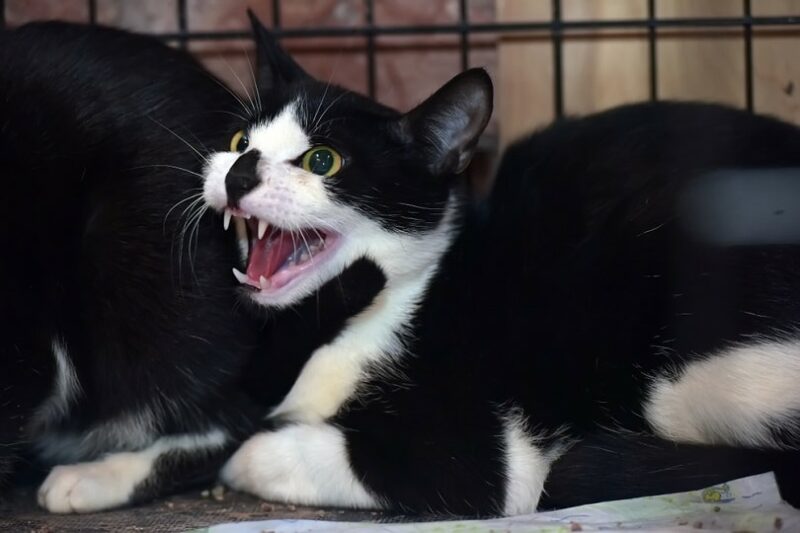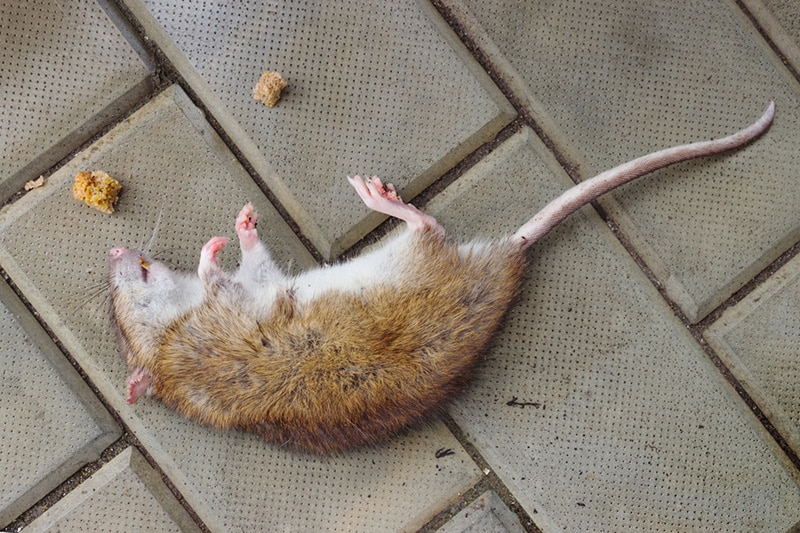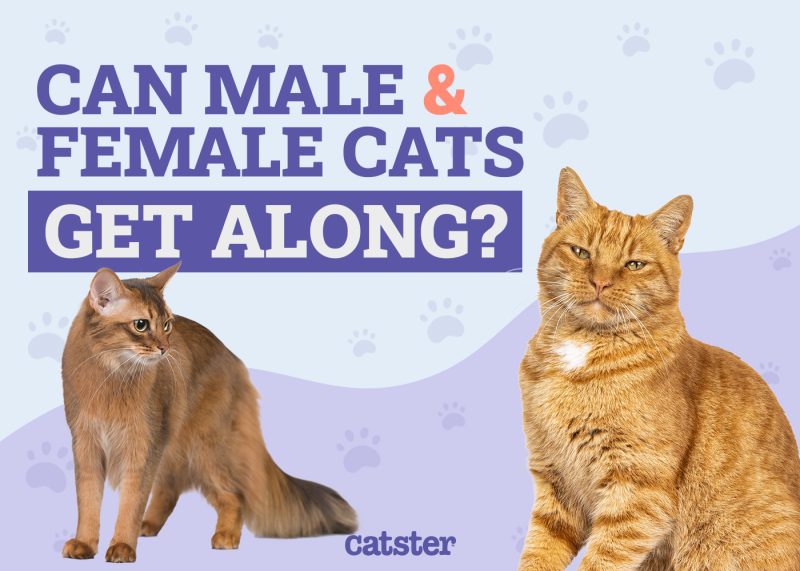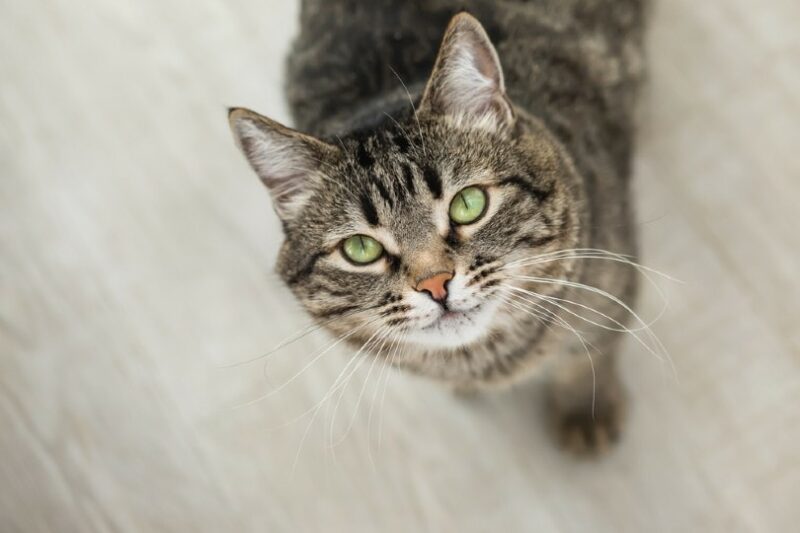In this article
Rabies is a severe, usually deadly disease caused by the rabies virus (Rabies Lyssavirus). It is present throughout the world and can affect all mammals. Unfortunately, this means humans as well as our domestic pets. Animals and people usually become infected via a bite or scratch from a rabid animal.

How Common Is Rabies in Cats?
The Centers for Disease Control (CDC) estimates that 59,000 people die of rabies every year around the world. Tragically, most of these deaths are caused by exposure to an unvaccinated rabid dog. Thanks to intensive prevention and control programs in domestic animals, the United States and Canada have managed to significantly reduce these mortality numbers to fewer than 1–3 people a year since the 1960s.
Still, around 5,000 animal rabies cases are reported every year to the CDC. While a large majority of these are in wildlife, every year, 60–70 cases are dogs, and around 250 are cats. This means that cats are the domestic animals most commonly infected by rabies in the United States.
How Do Cats Get Rabies?
Most cases of rabies in cats are caused by being bitten or scratched by an infected wild animal. In North America, this will often be a fox, a raccoon, a skunk, a coyote, or a bat. These animals are known as “primary reservoir hosts” for rabies.
While it makes sense that more adventurous and nocturnal cats are at a higher risk of encountering a rabid animal outdoors, it is important to understand that cats who are either mostly indoors or kept close to home are also vulnerable. This is because a wild animal infected with rabies will often start behaving unusually and unpredictably, like acting more tame, seeming less afraid, or attacking a person or a pet near (or even inside) their house.
Cases have been reported cases of rabid foxes, skunks, and raccoons using cat flaps to get into people’s houses and biting domestic pets. Rabid bats have also been known to fly into houses in broad daylight or through a chiminea. While these incidents are fairly uncommon, they do happen, and they are one of the reasons household cats still die of rabies every year in North America and around the world.
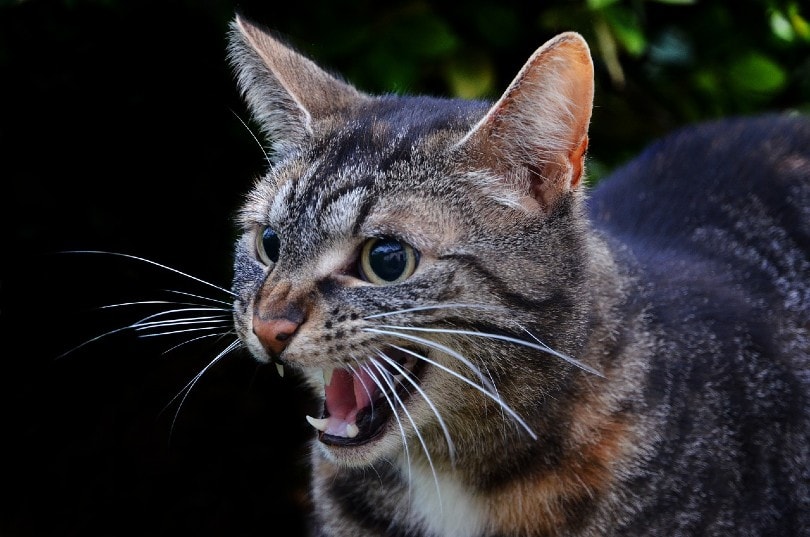
What Happens When a Cat Gets Bitten by a Rabid Animal?
The moment a cat is bitten or scratched by an animal with rabies is called inoculation. The rabies virus enters the nerve and muscle cells around the wound (called the inoculation site) and starts working its way up the nerves towards the spine and the brain. It can progress as quickly as 4 inches (10cm) per day. Once the central nervous system has been infected, the virus can then spread throughout the rest of the nerves of the body even faster, up to 16 inches (40cm) per day.
Once it has infected the brain, the virus moves down certain nerves inside the head (called cranial nerves) toward the saliva-producing glands at the back of the jaw. The saliva then becomes the place where the highest concentration of rabies virus is found, which is why bites are so contagious.
Animals will usually start showing signs within 1 to 5 days from this point.

How Long Does It Take for Rabies to Show in Cats?
The time between when a cat is first infected and when they start showing signs is called the incubation period. This can vary a lot in cats, with cases reported from 2 to 24 weeks. The average is generally 4 to 6 weeks. This means a cat can be bitten by a rabid bat, which would cause a nearly invisible wound, and then go for over a month or more without showing any symptoms.
Some of the factors that are thought to affect the incubation period are the age of the animal, the location of the inoculation site, and whether the cat has been previously vaccinated or not.
What Are the Signs of Rabies in Cats?
It is important to remember that you can never tell if an animal has rabies just by looking at it. Sometimes, especially in the early stages, signs can be very discrete or even absent.
This being said, many cats do show signs. These can be summarized in 3 categories based on when they manifest: the early (called “prodromal”) phase, the furious phase, and the paralytic phase.
These stages often occur in this order, especially in cats, but not always. In some cases, the phases can overlap, or some phases can be completely skipped altogether, and the animal can pass away quite early on in the process.
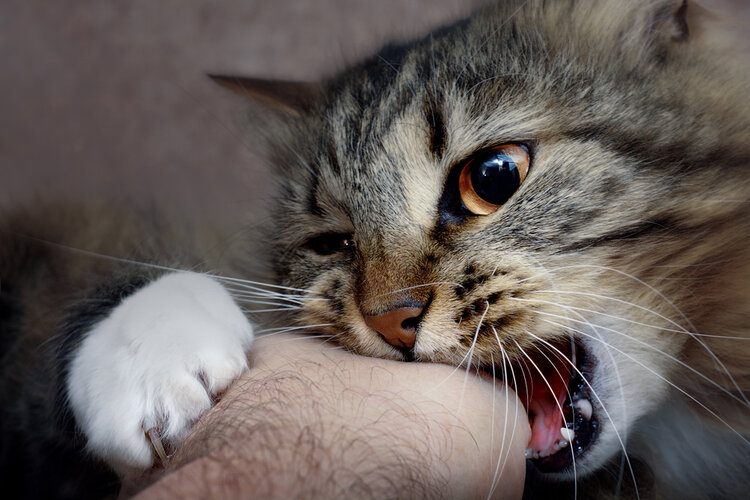
Here is a summary of the signs that can be noticed in each phase and how long the stage might last:
- May seem anxious and jumpy
- Changes in demeanor
- Light avoidance (also called “photophobia”)
- Loss of appetite
- Fever (occasional)
- Itching and licking of the inoculation site
- Behavior might become unpredictable and aggressive
- Snapping at the air or seems to be “seeing” things
- Eating or attacking unusual objects
- Attacking bars or walls of a crate or kennel
- Incoordination and disorientation
- Twitching and tremors
- Seizures and death
- Excessive drooling and foaming at the mouth
- Difficulty swallowing and blinking
- Changes in vocalization
- Progressive paralysis
- Coma and death

Can I Get My Cat Tested for Rabies?
It is, unfortunately, impossible to test an animal for rabies while they are alive. Brain samples are required to see whether an animal has rabies or not, and for this, the animal must be put to sleep. This is why it is incredibly important to have cats vaccinated, as there are significant legal and public health implications if a cat bites a person and needs to be tested.
Can Rabies Be Cured?
Sadly, there is no cure for rabies. Once an animal or a person is showing symptoms, it is too late to save them, and they will usually die within 10 days. Because the outcome is always fatal and because of the ongoing risk to people, a cat in which rabies is strongly suspected has to be put to sleep, and the case must be reported to the relevant public health authorities.
This being said, when there is a concern that an animal or a person might have been in contact with a rabid animal, even a small scratch, it is usually recommended to vaccinate (or re-vaccinate) them to significantly reduce the chances of them developing rabies. The sooner the injection is given, the better. This is called rabies postexposure prophylaxis.

Is Rabies Preventable?
Yes. Rabies is completely preventable with vaccination. This is why far fewer people and pets die of rabies now compared to 100 years ago. It is also why certain countries have managed to completely eradicate rabies.
Though it is not always a legal requirement, the American Association of Feline Practitioners and most other veterinarians in North America advocate vaccinating cats against rabies and keeping them up to date on their boosters. When it comes to rabies, there is absolutely no doubt that prevention is much better than the alternative.
A cat’s vaccination status may also have significant implications when it comes to public health requirements if they bite or scratch a person. Depending on the laws of the state and the county, a lengthy period of isolation and quarantine is often required, usually at the pet parent’s expense, especially if the cat has never been vaccinated.

Frequent Asked Questions
How often does my cat need to be vaccinated for rabies?
This will depend on the specific brand and protocol used by your veterinarian, but most rabies vaccines can be given after 12 weeks of age, then a year later, and then every 3 years.
Do I have to get my cat vaccinated for rabies?
Though it is not a legal requirement in all states, vaccinating cats against rabies is generally strongly recommended by veterinarians and public health services in most parts of North America. In certain areas, some veterinary clinics and hospitals will even refuse to take on unvaccinated animals as regular patients because of the risk it presents to their staff. This being said, every situation is different, and it is worth having a conversation with your veterinarian if you have questions about getting your cat vaccinated for rabies.
If you need to speak with a vet but can't get to one, head over to PangoVet. It's an online service where you can talk to a vet online and get the advice you need for your pet — all at an affordable price!

My cat only lives indoors. Should I still get her vaccinated?
Though the risk of catching rabies is lower for indoor cats, the advice will still often be to have them vaccinated nonetheless. Every year, there are several cases of indoor-only cats exposed to rabies. Rabid animals in the wild often start behaving recklessly and find their way into homes, especially bats. Not to mention that even a quiet and content indoor cat can sometimes find its way outside for a night from time to time!
What could happen if I don’t get my cat vaccinated for rabies?
Though rabies vaccination can be a legal requirement for owning a cat in certain areas, the choice to vaccinate may be left up to the pet parent in others. This being said, there can be some serious and costly implications in the event of an unvaccinated cat getting attacked by a wild animal or biting and scratching a person. It is important to be aware of what this would entail, and it is always best to discuss this with your veterinarian so you can make a fully informed decision.
What should I do if I think my cat has been exposed to rabies?
First, make sure to pause and consider whether you or another person may have been exposed to the wild animal at the same time. This includes bats inside the house or found on the ground. If possible, realistic, and safe, try to contain the wild animal in the event of it needing to be tested. If you need to handle a dead bat, be sure to wear gloves.
If your cat has just been bitten, and if he will let you, try to gently flush the wound with water, then call your veterinarian right away for further advice. Depending on your cat’s vaccination status, your vet may want to give him a rabies booster in addition to tending to the wound. They should also be able to advise you on the next steps in terms of the local public health advice to follow.
It is really important not to just wait and see or assume your cat is fine because there are no visible bite wounds. When in doubt, if there has been a close encounter, call your veterinarian.
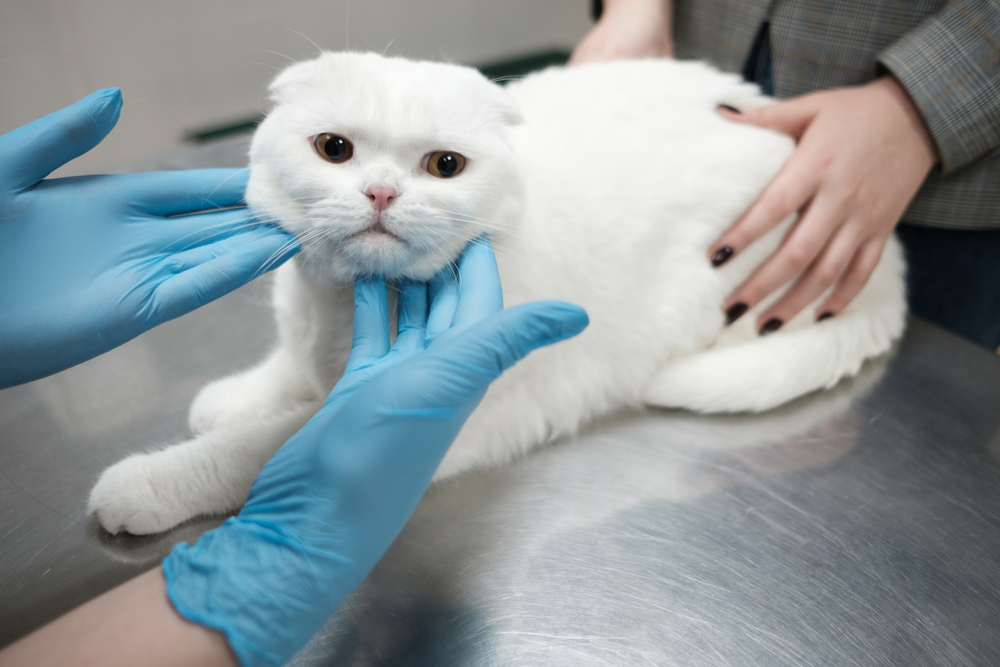
Can I catch rabies from a cat?
Though it is extremely uncommon, it is absolutely possible to catch rabies from a cat, especially if they have not been vaccinated and have become infected from a wild animal. This is why it is often a legal requirement to confine and monitor cats who have bitten or scratched a person for at least 10 days after the incident, in coordination with public health authorities, to make sure they do not develop signs of rabies.
What should I do if I get bitten or scratched by a cat?
Wash the wounds immediately with soap and water. If the cat is not yours and it is safe to do so, try to keep it confined so it can be identified and monitored for 10 days by its owner or by the local public health authorities. If the cat seems unwell, it should be evaluated by a veterinarian for signs of rabies. If the cat ran away, then it is best to consult with public health officials to be safe.
If you have any concerns whatsoever about this and are concerned you may have been exposed to rabies, you should speak to your local public health authorities immediately about what to do, as well as your doctor.
Final Thoughts
Rabies can be a scary situation. Thankfully, it can be prevented with vaccines. Years ago, rabies was not as preventable as it is today. Thousands of animals have been saved due to vaccines, including pets. If you encounter a wild animal, know the signs of rabies and be aware. Contact a local authority in your area if you recognize any of the aforementioned signs.
Featured Image Credit: Anna Krivitskaya, Shutterstock
